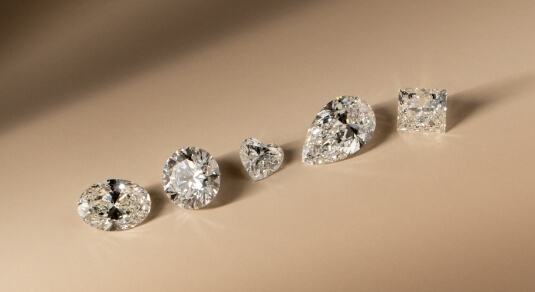Introduction: What Are Lab-Grown Diamonds and Why Do They Matter?
Imagine a world where luxury and sustainability coexist harmoniously. How can the glitter of a diamond align with the green initiatives that protect our planet? The answer lies in lab-grown diamonds and their intriguing partnership with the World Wide Fund for Nature (WWF). As environmental concerns take center stage, lab-grown diamonds offer a compelling alternative to mined diamonds, aligning luxury with responsibility. But what makes these diamonds so special, and how do they contribute to global conservation efforts?
The Science Behind Lab-Grown Diamonds
Lab grown diamonds and wwF, also known as synthetic or cultured diamonds, are created using advanced technological processes that replicate the natural diamond formation. These diamonds are produced either through High Pressure High Temperature (HPHT) or Chemical Vapor Deposition (CVD) methods. Both techniques produce diamonds that are chemically, physically, and optically identical to natural diamonds.
HPHT involves mimicking the high pressure and temperature conditions found deep within the Earth’s mantle. This method uses a small diamond seed, which is placed in carbon and subjected to intense heat and pressure, resulting in the formation of a diamond.
CVD, on the other hand, involves placing a diamond seed in a chamber filled with carbon-rich gas. The gas is ionized, causing carbon atoms to deposit onto the seed and grow into a diamond layer by layer. This method allows for more precise control over the diamond’s properties.
Environmental and Ethical Advantages
The shift towards lab-grown diamonds is driven by their significant environmental and ethical benefits. Traditional diamond mining has long been associated with severe ecological damage, including deforestation, soil erosion, and water pollution. Additionally man made diamonds, the industry has faced criticism for unethical practices, such as human rights abuses and funding conflicts.
Lab-grown diamonds, however, offer a sustainable and ethical alternative. Their production requires significantly less land and water, and it generates a fraction of the carbon emissions compared to traditional mining. Moreover, lab-grown diamonds eliminate the need for harsh labor conditions and conflict-related issues, ensuring a guilt-free purchase for consumers.
According to a study by Frost & Sullivan, the production of a one-carat lab-grown diamond uses 85% less water and produces 50% fewer carbon emissions than mining a traditional diamond. These compelling statistics highlight the potential of lab-grown diamonds to mitigate the environmental impact of the diamond industry.
The Role of WWF in Promoting Sustainable Practices
The World Wide Fund for Nature (WWF) is a global organization dedicated to conserving the world’s most vulnerable species and ecosystems. Recognizing the environmental benefits of lab-grown diamonds, WWF has partnered with companies in the industry to promote sustainable practices and raise awareness about the ecological impact of diamond mining.
Through this partnership, WWF aims to reduce the carbon footprint of the diamond industry and encourage consumers to make environmentally conscious choices. The organization collaborates with lab-grown diamond producers to establish best practices, ensure transparency, and promote ethical sourcing. This alliance not only enhances the credibility of lab-grown diamonds but also aligns with WWF’s mission to create a sustainable future.
WWF’s involvement also extends to educational campaigns, informing consumers about the environmental and ethical implications of their jewelry purchases. By highlighting the advantages of lab-grown diamonds, WWF empowers consumers to make informed decisions that support conservation efforts.
Market Trends and Consumer Preferences
The demand for lab-grown diamonds has surged in recent years, driven by a growing awareness of environmental and ethical issues among consumers. Millennials and Gen Z, in particular, prioritize sustainability and social responsibility in their purchasing decisions, making lab-grown diamonds an attractive option.
Market trends indicate a significant shift towards lab-grown diamonds, with sales expected to continue rising. According to a report by Bain & Company, lab-grown diamonds could account for up to 10% of the diamond market by 2030. This growth is fueled by advancements in technology, increased affordability, and the appeal of sustainable luxury.
Jewelry brands are also responding to this trend by incorporating lab-grown diamonds into their collections. Leading designers and retailers are showcasing lab-grown diamonds as a viable and desirable alternative to mined diamonds. This shift not only meets consumer demand but also aligns with corporate social responsibility goals.
The Future of Lab-Grown Diamonds and Conservation
The partnership between lab-grown diamond producers and WWF represents a promising step towards a more sustainable future for the diamond industry. As technology continues to advance, the quality and affordability of lab-grown diamonds are expected to improve, further driving their adoption.
Moreover, the collaboration with WWF ensures that the growth of the lab-grown diamond market aligns with environmental conservation goals. By promoting sustainable practices and ethical sourcing, this partnership sets a new standard for the industry and demonstrates the potential of luxury goods to contribute to global conservation efforts.
In conclusion, the rise of lab-grown diamonds and their partnership with WWF marks a significant shift in the jewelry industry. By choosing lab-grown diamonds, consumers can enjoy the brilliance and allure of diamonds without compromising their values. This sustainable alternative not only reduces the environmental impact of diamond production but also supports ethical practices and global conservation efforts. As the world moves towards a more sustainable future, lab-grown diamonds shine as a beacon of responsible luxury.
Conclusion: A Brighter, Greener Future
So, can luxury and sustainability truly coexist? With lab-grown diamonds and the support of organizations like WWF, the answer is a resounding yes. These diamonds offer a dazzling solution to the environmental and ethical challenges posed by traditional mining. As consumers become more conscious of their impact on the planet, the demand for sustainable alternatives will continue to grow.
By choosing lab-grown diamonds, we can all contribute to a brighter, greener future. This partnership between innovative technology and conservation efforts not only transforms the jewelry industry but also paves the way for a more sustainable world. How will you make a difference with your choices? The answer lies in the sparkle of a lab-grown diamond.





